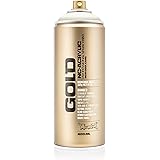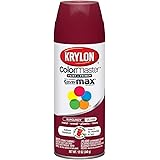Unleashing Your Inner Designer: The Ultimate Guide to a DIY Kitchen Update
Transforming a kitchen can often seem like a daunting and expensive endeavor. However, a stunning DIY kitchen update is entirely achievable, as demonstrated in the video above. Many homeowners and renters are discovering the immense satisfaction and cost savings that come with tackling projects like cabinet painting and backsplash installation themselves. This article provides an expanded guide to help you bring your own kitchen vision to life, building on the practical steps shown.
When considering a kitchen refresh, the focus is often placed on dramatic changes. Yet, significant impact can be achieved with thoughtful, hands-on projects. An entire space can be revitalized without the need for extensive demolition or high-priced contractors, empowering individuals to personalize their homes on a budget.
The Foundation: Preparing Your Cabinets for a Fresh Look
The cabinets in a kitchen are often considered the backbone of its design. A fresh coat of paint can dramatically alter the entire atmosphere, turning an outdated space into a modern sanctuary. Proper preparation is truly essential for ensuring the paint adheres well and lasts for years.
Deep Cleaning: The Unsung Hero of Cabinet Painting
Before any paint or primer is applied, the cabinets must be thoroughly cleaned. Greasy residue, accumulated over years of cooking, can prevent paint from sticking properly, leading to peeling and a less-than-professional finish. A degreaser solution, such as a strong mixture of Dawn dish soap and very hot water, is highly effective for this task.
This soapy solution is typically applied liberally, and the cabinets are scrubbed down to remove all traces of grime. After cleaning, the surfaces are rinsed with clean water and allowed to dry completely. Any remaining moisture could compromise the primer’s adhesion.
Priming for Perfection: Building a Solid Base
Once the cabinets are sparkling clean and dry, priming becomes the next critical step. Think of primer as the canvas before an artist paints a masterpiece; it creates an even, adhesive surface for the paint. A good quality primer ensures better paint adhesion, provides a uniform base color, and can even block stains or odors from bleeding through the final paint coats.
The initial coat of primer does not need to be perfectly neat; its main purpose is simply to coat the wood thoroughly. A second coat is often applied to ensure complete coverage and a smoother finish. Each layer should be allowed to dry for at least an hour, or as per manufacturer instructions, before the next coat is added. This layering process helps in building a durable and attractive surface for the paint.
Mastering the Art of Cabinet Painting: Tips for a Flawless Finish
Painting cabinets can be a time-consuming project, but the results are incredibly rewarding. Patience and attention to detail are important, especially when striving for a smooth, factory-like finish. Many different paint types are suitable for cabinets, including durable enamels, latex paints, and hybrid options that combine the best properties of both.
The No-Removal Method: Painting Cabinets While Attached
While some DIY experts advocate for removing cabinet doors for painting, it is also possible to paint them while they remain attached. This method saves time and effort associated with labeling, removing, and reattaching numerous doors and hinges. When doors are left on, careful masking tape is applied around hinges and interior edges to protect them from paint.
This approach often requires working in sections and carefully managing drips. It is recommended that painting be done methodically, ensuring all visible surfaces are evenly coated. Applying several thin coats of paint, rather than one thick one, generally yields a more professional and durable finish. Between each coat, sufficient drying time is allocated, often 4-6 hours, to allow the paint to cure properly.
Adding the Finishing Touches: Hardware and Beyond
Once the paint has fully dried and cured – a process that can take several days or even weeks for optimal hardness – new hardware can be installed. Knobs and pulls not only provide functionality but also act as jewelry for your cabinets, enhancing the overall aesthetic. The selection of modern handles and knobs can dramatically update the appearance of even older cabinets.
This seemingly small detail can tie the entire DIY kitchen update together, reflecting the desired style. The decision to simply paint existing cabinets and add new hardware, rather than replacing them, often results in substantial cost savings. This budget-friendly approach allows for funds to be allocated to other areas of the kitchen or saved for future projects.
Elevating Your Walls: Installing a Peel and Stick Backsplash
Beyond the cabinets, the backsplash plays a crucial role in defining the kitchen’s style and protecting walls from splashes. Peel and stick backsplashes have become an incredibly popular option for their ease of installation and versatility. These adhesive tiles offer an immediate visual upgrade without the mess or commitment of traditional tiling.
Precision Placement: Ensuring Seamless Backsplash Application
Installing peel and stick tiles requires careful measurement and alignment to achieve a professional look. Often, socket covers are removed to allow the tiles to extend behind the outlets, creating a cleaner line. The adhesive backing on these tiles is very strong, and caution is advised during placement, as removing them can sometimes pull paint off the wall. This is a crucial consideration, particularly for renters.
The goal is to align each tile closely with the last, ensuring that connection lines are virtually invisible. This seamless appearance creates the illusion of traditional tile work. Simple tools like a utility knife and a straight edge are typically all that is needed for cutting tiles to fit awkward spaces or edges. Gentle pressure is applied to each tile once placed to ensure maximum adhesion.
Renters Beware: Tips for Temporary Backsplash Solutions
For individuals residing in rental properties, a DIY kitchen update using peel and stick backsplash offers a fantastic temporary solution. However, given the strong adhesive, it’s prudent to consider options designed to be more easily removable. Some brands specifically offer “renter-friendly” peel and stick tiles, which are formulated with a less aggressive adhesive.
Alternatively, a layer of painter’s tape or a removable wallpaper can be applied to the wall before the peel and stick tiles are attached. This creates a barrier that protects the original wall paint when the tiles are eventually removed. Such foresight allows for a stylish kitchen transformation without jeopardizing a security deposit.







